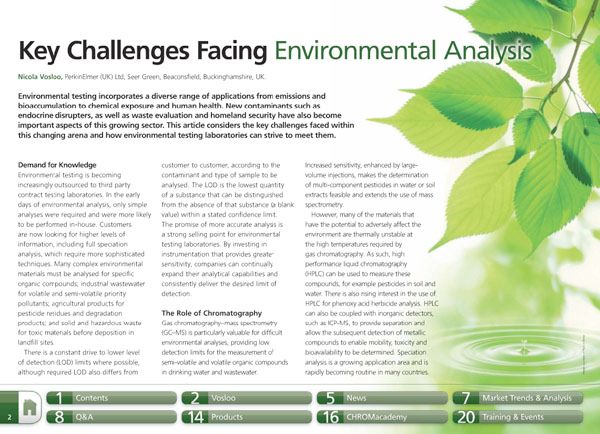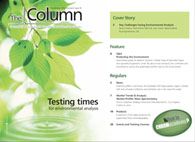Key Challenges Facing Environmental Analysis
This article considers the key challenges faced within this changing arena and how environmental testing laboratories can strive to meet them.
Environmental testing incorporates a diverse range of applications from emissions and bioaccumulation to chemical exposure and human health. New contaminants such as endocrine disrupters, as well as waste evaluation and homeland security have also become important aspects of this growing sector. This article considers the key challenges faced within this changing arena and how environmental testing laboratories can strive to meet them.
New Method Explored for the Detection of CECs in Crops Irrigated with Contaminated Water
April 30th 2025This new study presents a validated QuEChERS–LC-MS/MS method for detecting eight persistent, mobile, and toxic substances in escarole, tomatoes, and tomato leaves irrigated with contaminated water.
University of Tasmania Researchers Explore Haloacetic Acid Determiniation in Water with capLC–MS
April 29th 2025Haloacetic acid detection has become important when analyzing drinking and swimming pool water. University of Tasmania researchers have begun applying capillary liquid chromatography as a means of detecting these substances.

.png&w=3840&q=75)

.png&w=3840&q=75)



.png&w=3840&q=75)



.png&w=3840&q=75)









